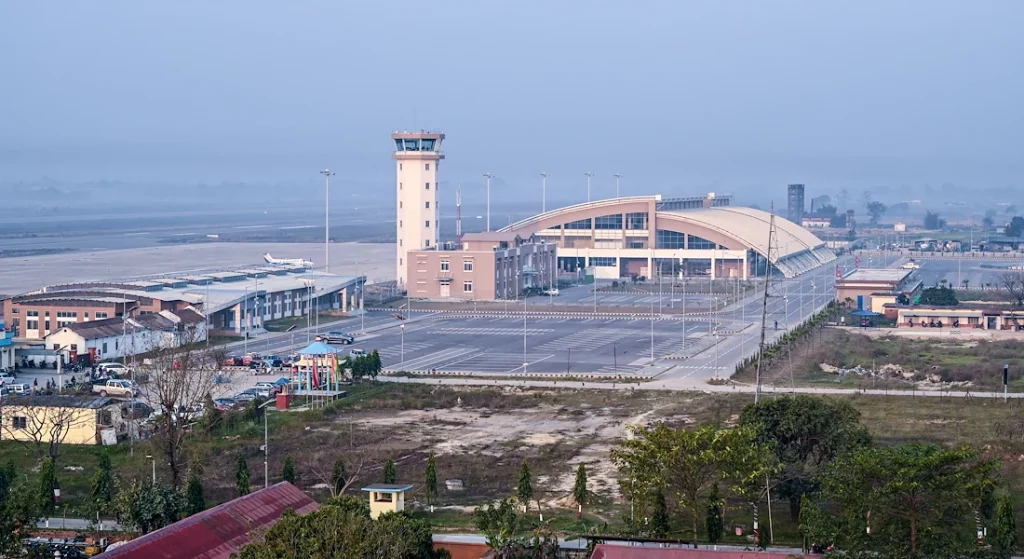KATHMANDU: Despite challenges posed by the coronavirus disease (COVID-19) pandemic, the construction of Nepal’s Gautam Buddha International Airport (GBIA) is nearly complete. GBIA will be Nepal’s second international airport. It will also serve as an alternate for Tribhuvan International Airport in Kathmandu in the event of bad weather or other technical issues there.
The airport is 19 kilometers from the UNESCO World Heritage Site of Lumbini, the birthplace of Lord Buddha.
GBIA will be Nepal’s second international airport. It will also serve as an alternate for Tribhuvan International Airport in Kathmandu in the event of bad weather or other technical issues there.
OPERATIONAL READINESS
“To ensure operational readiness of the communication and navigational facilities of the airport, a technical team from Thailand undertook calibration flights and flight inspections from 18-28 February 2022, including checking performance and efficiency of navigation instruments, communication, and air traffic control-related systems,” says Project Manager Pravin Neupane.
TERMINAL
The newly built terminal, spread over 15,169 square meters, is ready to welcome passengers. Work on immigration and customs facilities is ongoing, with electrical fittings being installed in the arrival and departure halls.
RUNWAY
GBIA’s new runway is 3,000 meters long. The existing 1,500-meter runway of the adjacent domestic airport will be used as a parallel taxiway.
CONTROL TOWER
The new control tower stands tall and ready with modern equipment.
MODERN EQUIPMENT AND TECHNOLOGY TRANSFER
Advanced navigational aids and airport lighting for safety and navigation have been installed, along with other equipment. The airport has been constructed as category 4E in accordance with the guidelines of the International Civil Aviation Organization. Large commercial passenger and cargo airplanes from Boeing and Airbus or equivalent can be operated from GBIA. Moreover, an advanced Instrument Landing System will allow planes to land in GBIA under reduced visibility which is a first for Nepal.
ADMINISTRATIVE BUILDING AND OTHER FACILITIES
Already, staff members are using the administrative building. Technical training for the government’s civil aviation engineers is ongoing in one of the facility’s many meeting rooms.
Parking lots and driveways are ready for use. The newly constructed emergency response building houses fire trucks and ambulances.
DIRECT AIR CONNECTIVITY TO LUMBINI, BIRTHPLACE OF LORD BUDDHA
GBIA will provide direct connections to Lumbini, the birthplace of the Buddha—and a major tourist and pilgrimage destination.
‘THE NEW AIRPORT IS OUR PRIDE’
“The new airport is our pride. It will put our city on the global map. We will tie-up with surrounding places and come up with a Buddhist circuit package so that we can keep tourists for a longer duration,” says Hari Prasad Adhikari, Mayor of Siddharthanagar Municipality. “Also, it’s now time for us to think big and plan for proper parking facilities, a waste management system, and a green and clean public transport system so that we can become a ‘smart’ city as we welcome more tourists.”
BOOST TO TOURISM, TRADE, AND THE ECONOMY
GBIA is expected to serve 760,000 passengers by 2030, including 280,000 visitors to Lumbini.
“The airport will help revive the country’s tourism industry that has suffered due to the COVID-19 pandemic,” says C. P. Shrestha, President of the Regional Siddhartha Hotel Association. “At least 2,000 hotel rooms are coming up in this region itself. People are investing in five- and four-star hotels because they know air connectivity is crucial to bring in tourists.”
Picture & news source: adb.org
https://www.adb.org/news/photo-essays/nepal-s-second-international-airport-ready-takeoff?fbclid=IwAR3p8-MdxXYuoYZJaGXHQcfKDW739XolVkPIGNb6K0yo4aomID_WR1qDKl4

